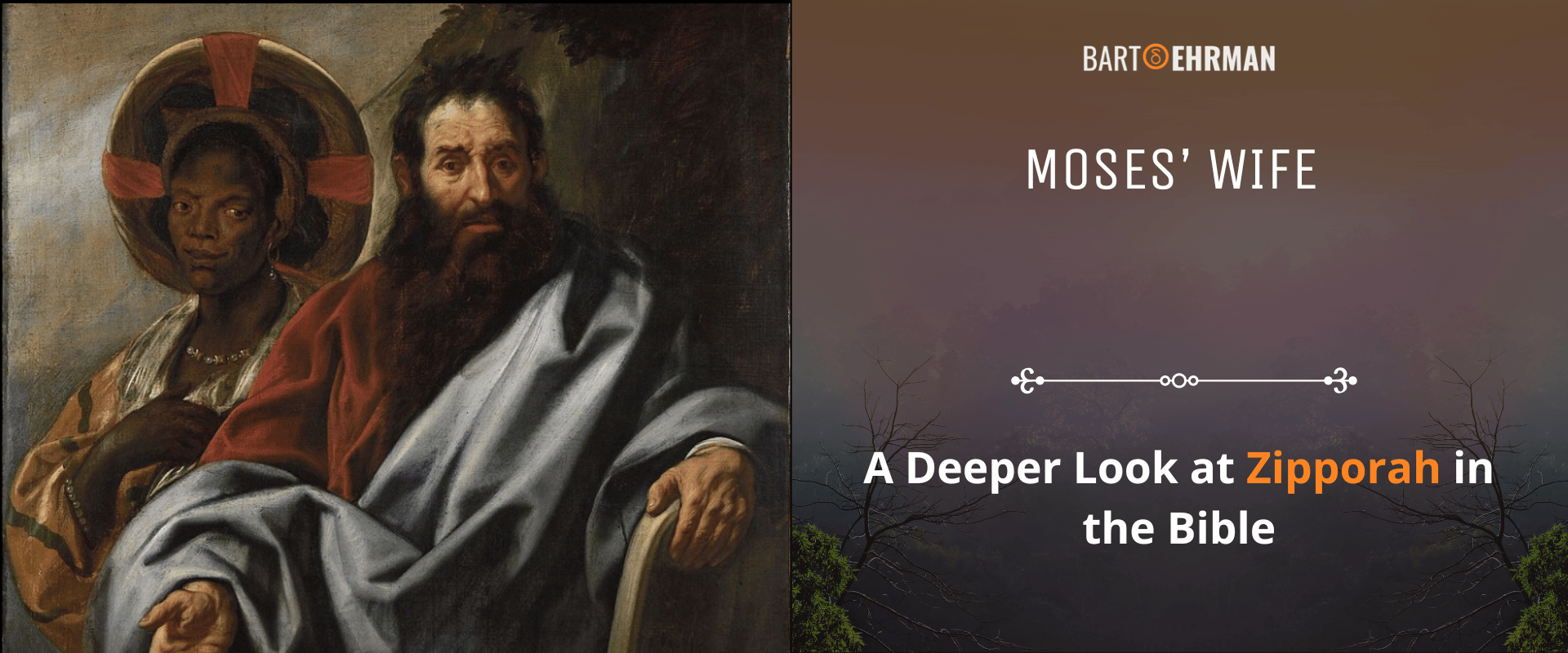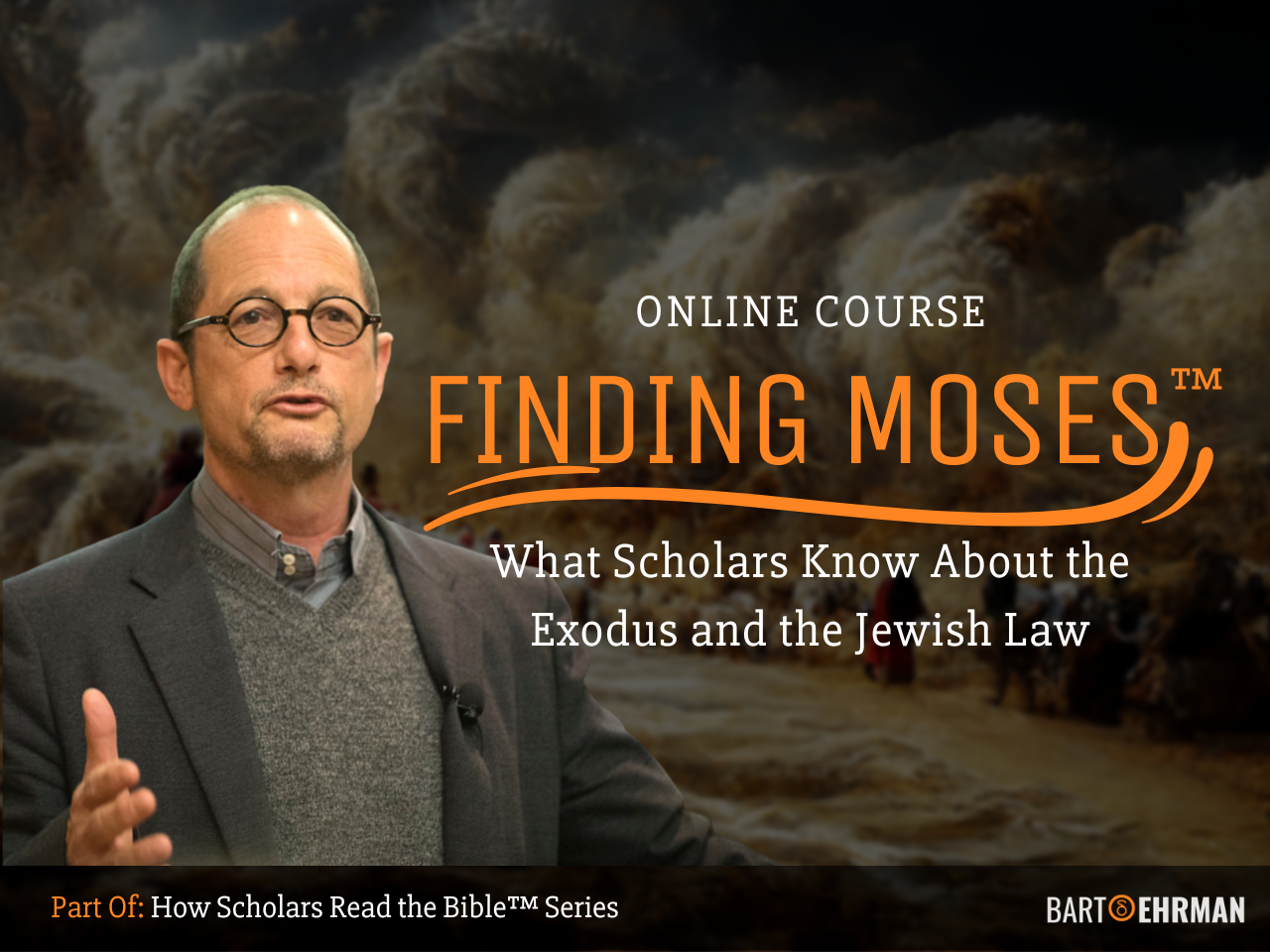Moses' Wife: Zipporah'S UNTOLD STORY in the Bible

Written by Marko Marina, Ph.D.
Author | Historian
Author | Historian | BE Contributor
Verified! See our guidelines
Verified! See our editorial guidelines
Date written: October 5th, 2023
Disclaimer: The views and opinions expressed in this article belong to the author and do not necessarily match my own. - Dr. Bart D. Ehrman
In the annals of history, specific names stand like beacons, their stories woven into our collective consciousness. Moses, the revered leader who led the Israelites out of Egypt, is undoubtedly one such luminary figure. Yet, behind every great man, there often lies an equally remarkable woman. In this article, we delve into the life of Moses’ wife Zipporah.
While Moses' life has been well-documented, we'll provide just enough context to set the stage, allowing us to focus primarily on the life and legacy of Zipporah. Together, we'll unveil the woman who shared her life with one of history's most iconic figures, a woman whose own story deserves recognition in its own right.

The Importance of Women in Moses’ Life
Moses' family is one of the most enigmatic subjects in the Bible. While the Scriptures provide extensive details about the life and leadership of this great figure among the Israelites, they offer remarkably sparse insights into his family members. This conspicuous absence of information adds an intriguing layer of mystery and encourages various modern interpretations.
Yet, upon closer examination, we discover that his wife was not the sole pivotal woman in his journey. The influence and significance of women in Moses' life played a crucial role in the liberation of the Israelites.
Moses Flees from Egypt and Meets Zipporah
The incident that set the redemption process in order happened when Moses killed an Egyptian who was beating a Hebrew (Exodus 2:11-12). In a desperate bid to evade the impending death penalty, Moses sought refuge in Midian, a barren land located to the south of Judah.
Did You Know?
Midian people are mentioned several times in the Quran - a Holy Book of Islam. Allah wiped them out as punishment for both their scandalous business practices and disbelief.
In Midian, near a well, we find the beginning of Moses’ wife's story: “When Pharaoh heard of this, he tried to kill Moses, but Moses fled from Pharaoh and went to live in Midian, where he sat down by a well. Now a priest of Midian had seven daughters, and they came to draw water and fill the troughs to water their father’s flock. Some shepherds came along and drove them away, but Moses got up and came to their rescue and watered their flock (Exodus 2:15-17).”
In other words, Moses refused to tolerate wrongdoing and stood in defense of Midianite women. The subtle message here is to show that Moses isn’t concerned only about the lives of other Israelites. He fights against any evil!
Who did Moses marry? The Exodus provides us with an answer. After the incident on the well, the priest named Jethro invites Moses into his house. There, Jethro “gave Moses his daughter Zipporah as wife (Exodus, 2:21).” Interestingly enough, Exodus never states Moses loved Zipporah (or the reverse) or that he found her beautiful. We are simply told he was given her hand in marriage.
Yes, I know. It’s far from our modern notions of romance and marriage. But, as one poet said: “The past is a foreign country they do things differently there.”
How old was Zipporah when she married Moses? Unfortunately, the Bible doesn’t provide any information about her age. This lack of information leaves room for interpretations and speculations.
One rabbinic tradition holds that Zipporah was very young and beautiful when she married Moses. The same tradition asserts that Moses’ wife remained beautiful even as she grew older.
However, we have to approach these interpretations with caution, as they are not based on direct biblical evidence. Instead, they are the products of later traditions and speculations.
Moses’ Wife and Her Essential Role in the Story of Moses
After Moses received the mission the lead the Israelites out of Egypt, equipped with the staff of God, he left Jethro’s house and took Zipporah and his sons with him.
Did You Know?
Moses embarked on his journey to Egypt with his "sons," who are left unnamed. But here's the twist! According to Exodus 18:3-5, Moses and his wife Zipporah had two children, Gershom and Eliezer. The Bible keeps us on our toes with this intriguing family revelation!
Exodus then brings us the most powerful story related to Moses’ wife: At a lodging place on the way, the Lord met Moses[b] and was about to kill him. But Zipporah took a flint knife, cut off her son’s foreskin, and touched Moses’ feet with it. 'Surely you are a bridegroom of blood to me,' she said. So the Lord let him alone (Exodus 4:24-26)."
This is one of the most enigmatic passages in the Hebrew Bible. As Carol Meyers observes in his Commentary on Exodus, we can be sure of only three things:
Zipporah in the Bible is the one who understands what needs to be done to perpetuate Moses’ destiny. In other words, she comprehends the concept of spiritual ascension and recognizes that her husband is now engaged in an exceedingly unique “meeting” with God.
Furthermore, Moses' wife came to a stark realization that his life hung in the balance due to an imperfection that seemed incongruent with his extraordinary encounter with God. She quickly discovered that their son had not been circumcised. Promptly rectifying this oversight, her swift action saved Moses and enabled him to continue his divine mission.
Moses’ son who got circumcised with a flint, is most likely their firstborn, Gershom!
Zipporah, a woman from a different nation, understood the unique connection between God and Israel - symbolized by circumcision. That action signified a special bond between God and Israel and her bond with God rather than Midian.
Who Was Moses’ Second Wife: A Mysterious Account
The second time Zipporah is (possibly) mentioned in the Bible is in the Book of Numbers. The context of the story is set by Moses’ brother Aaron and his sister Miriam: “Miriam and Aaron began to talk against Moses because of his Cushite wife, for he had married a Cushite. 'Has the Lord spoken only through Moses?' they asked. 'Hasn’t he also spoken through us?' And the Lord heard this (Numbers 12:1-2)."
The story of the Cushite woman presents a significant challenge. Is this Zipporah or Moses’ second wife? In his Commentary on Numbers, Timothy R. Ashley offers one possible solution: “Perhaps the Cushite woman referred to was a part of the mixed multitude of Exodus 12:38, or even one of the rabble of Numbers 11:4."
In that hypothetical scenario, the unnamed woman (perhaps from Nubia?) would be Moses’ second wife. Who was Moses’ second wife? What happened to her? We can’t know for sure. As Ashley himself admits, all we can do is speculate. In other words, there is not enough information to clear this conundrum.
So, how many wives did Moses have? If we accept Ashley's hypothesis, it suggests that Moses may have had two different wives in the Bible:

Zipporah’s Later Life and Death: Mystery Continues
How did Zipporah die? The Biblical narrative primarily focuses on Moses’ life and his role in the liberation of the Israelites. The women in his life may have played a pivotal role, but their stories are always embedded within the main story of Moses.
Consequently, details about the later life of Moses’ wife, including the circumstances of her death, are not documented in the biblical texts. As a result, her death remains an unanswered question within the biblical account, and there are no specific biblical references to provide insight into this aspect of her life.
Conclusion: One Remarkable Life Filled With Mystery
The significance of women in Moses' life, from his courageous mother Jochebed to the defiant midwives and the compassionate daughter of Pharaoh, reveals the profound roles they played in the saga of the Israelites.
Zipporah, in particular, emerges as a central figure in Moses' journey. Her marriage to Moses and the enigmatic incident of circumcision underscore her unique role as a spiritual companion and guide. She understood the profound connection between God and Israel, symbolized by the act of circumcision, and took it upon herself to ensure its continuity.
Yet, the biblical account leaves us with questions. How old was Zipporah when she married Moses? Did they share a lasting love or a pragmatic union?
Who was Moses’ second wife? Was it a Cushite woman? A woman who remains a mysterious figure in the narrative.
As we search for answers, we are met with silence, a reminder that the Bible often focuses on the main storyline, leaving the details of secondary characters like Moses' wife shrouded in mystery.
Ready to delve even deeper into the life of Moses and the book of Exodus? Join Dr. Bart D. Ehrman's enlightening course 'Finding Moses' for scholarly exploration. Expand your knowledge and uncover the layers of this ancient narrative and a fascinating Biblical figure! Click the link below and start on this captivating intellectual journey!

